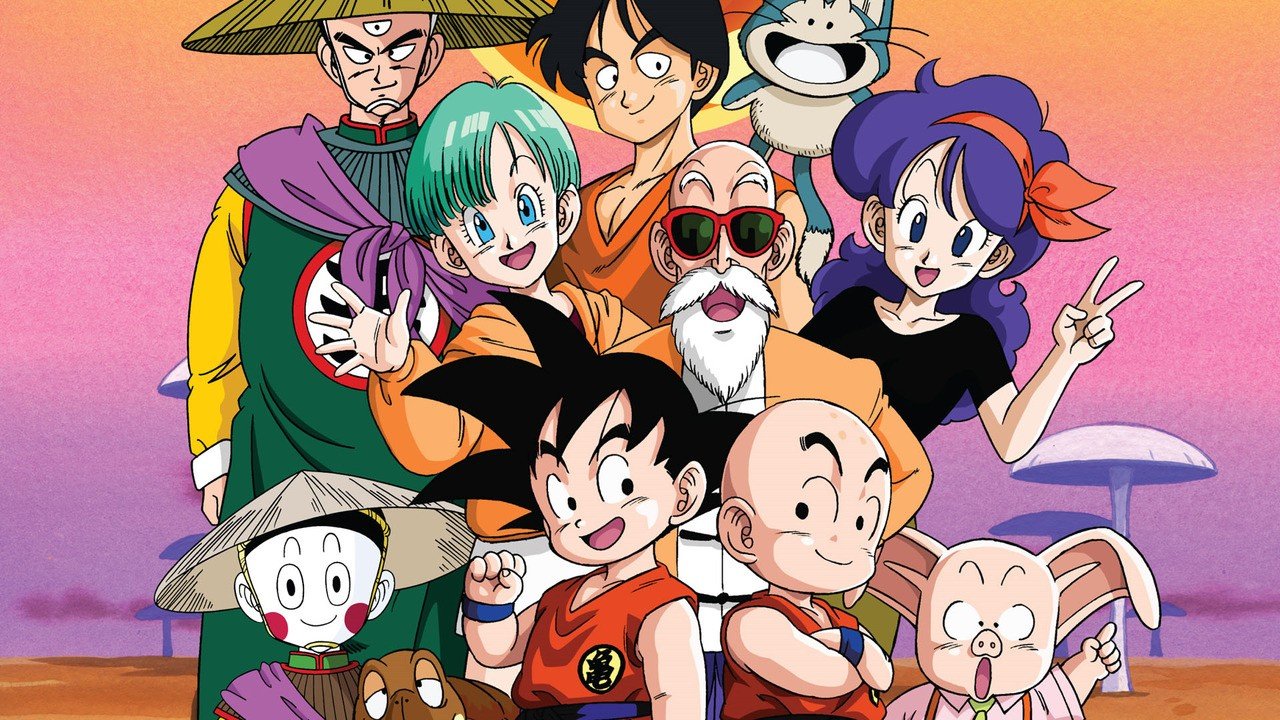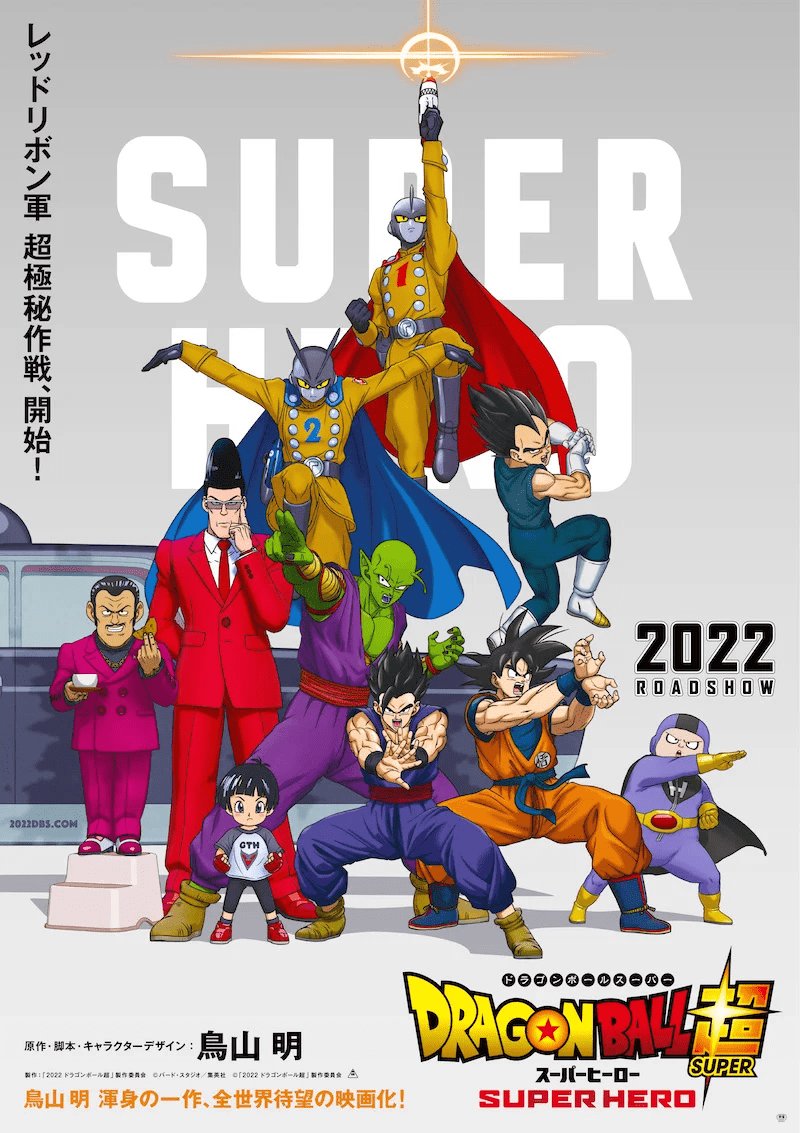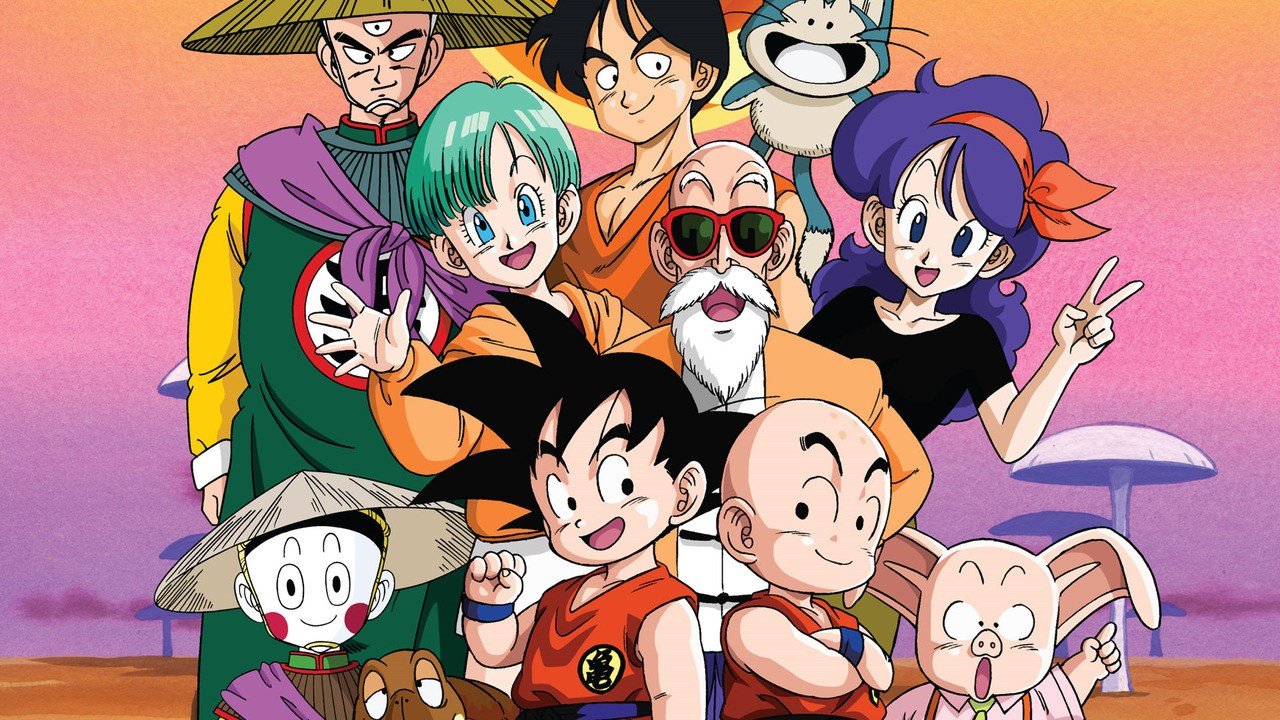Dragon Ball achieved a remarkable milestone in 2025, setting a new single-year revenue record for Bandai Namco. For the period between April 2024 and March 2025, Dragon Ball generated 190.6 billion yen in revenue, beating both Mobile Suit Gundam and One Piece by a significant margin. This is the first time any Bandai Namco property has crossed the 190 billion yen threshold in a single financial year, marking another high point for the long-standing anime franchise
The year’s financial success coincides with the 40th anniversary of Dragon Ball, which began serialization in 1984 and spawned multiple hit series, movies, and games. Dragon Ball’s continued expansion and popularity have made this latest record possible, reflecting its steadfast relevance and fan engagement around the world.
Dragon Ball Achieves All-Time High Annual Revenue
Bandai Namco’s 2025 financial report reveals that Dragon Ball posted 190.6 billion yen in sales for the fiscal year, an increase of nearly 50 billion yen from the previous year’s total of 140.6 billion. This marks the highest annual earnings ever reported for a single IP from Bandai Namco, underlining the franchise’s massive global draw.
This new record was driven by a mix of merchandise, video game sales, and the recent international success of Dragon Ball Super: Super Hero. The franchise’s steady release of new products and content continues to excite both longtime fans and new generations discovering Goku’s adventures.
Previously, Dragon Ball and Gundam have traded off the top spot as Bandai Namco’s highest earners. However, Dragon Ball’s performance this year set it far ahead. Its financial dominance points to the powerful combination of nostalgic value and ongoing content innovation.
The record has established Dragon Ball as not just an anime classic but also a dominant force in global entertainment business, pulling ahead of competing mega-franchises even as the anime industry as a whole continues to expand in popularity worldwide.
Comparison of Bandai Namco’s Top Franchises: Dragon Ball, Gundam, and One Piece
Bandai Namco’s 2025 financials rank Dragon Ball ahead of both Mobile Suit Gundam and One Piece. While Dragon Ball stood at 190.6 billion yen, Gundam followed at 153.5 billion, and One Piece ranked close behind Gundam with 139.5 billion yen. The gap highlights Dragon Ball’s lead not only in earnings but also in its broad reach across different markets.
Gundam has been a consistent top performer, thanks to its robust model kit sales and multimedia projects. Last year, Gundam briefly overtook Dragon Ball, but could not keep pace amid the release of new Dragon Ball content and collectibles.
One Piece, which has also enjoyed global success, holds its place among Bandai Namco’s elite properties, especially given its massive manga sales and celebratory anime events. Still, in the latest cycle, it did not match the surging sales of Dragon Ball merchandise and video games.
The 2025 comparison is a reflection of shifting trends within the anime and gaming ecosystem. It shows how strategic releases and anniversary campaigns can influence the market and redraw the landscape for even the most iconic franchises.
Key Highlights from Bandai Namco’s 2025 Financial Report
According to Bandai Namco’s 2025 Financial Report, Dragon Ball’s dominance was clear across all major revenue streams. Merchandise, especially figures and apparel, drove the largest share of sales, followed by strong digital game performance.
Gundam and One Piece also posted growth year-over-year, demonstrating that the increase was not exclusive to Dragon Ball but was most pronounced for that franchise. Both posted gains in merchandise, though not the record-breaking leap seen in Dragon Ball’s figures.
The report highlights the impact of strategic event releases around anniversaries and new anime films as crucial to 2025’s impressive results. Bandai Namco credits the franchise’s continued evolution as the basis for outperforming expectations and maintaining momentum past its 40th anniversary year.
The Evolution of Dragon Ball: From Manga to Global Multimedia Giant
The Dragon Ball franchise originated in 1984 as a manga series by Akira Toriyama, serialized in Weekly Shōnen Jump. Its anime adaptation followed shortly after, capturing audiences in Japan and setting the stage for global expansion.
Through the late 1980s and the following decades, Dragon Ball evolved from a manga and television show into a full-fledged multimedia enterprise, including movies, games, and merchandise. The core story has expanded across multiple series, each one deepening the lore and pulling in new fans.
Dragon Ball Z, for instance, expanded the original’s scope, emphasizing larger-scale battles while keeping the humor and adventure spirit. The franchise’s adaptable nature has been key, allowing it to transform alongside shifting audience preferences, technologies, and pop culture trends.
Today, Dragon Ball stands as a staple of anime culture worldwide, with its diverse content ecosystem making it much more than just a series on television.
Dragon Ball’s 40-Year Legacy and Enduring Popularity
Celebrating its 40th anniversary in 2024, Dragon Ball’s journey from manga pages to international screens is an iconic chapter in pop culture history. The franchise consistently finds new ways to stay relevant, whether through innovative new arcs, high-profile collaborations, or fresh merchandise launches.
Dragon Ball’s intergenerational appeal means parents share their love for the series with their children. The franchise’s understanding of its fan base has allowed it to persist for decades. Nostalgia for the original run, alongside the excitement of new projects, fuels its popularity.
Events like anniversaries, new series launches, and movie premieres reinvigorate interest. Dragon Ball’s core values of friendship, perseverance, and constant personal growth resonate across cultures, making its characters household names well beyond Japan.
The series’ relevance is also maintained through major streaming platforms, keeping the episodes accessible for both old and new viewers. Even today, Goku and other central figures are top choices for cosplay and online fan communities worldwide.
The Influential Role of Akira Toriyama in Dragon Ball’s Success
Akira Toriyama is the creative mind who gave the world Dragon Ball. His unique storytelling approach, wit, and vibrant art style set the tone for the franchise and shaped the direction of shonen manga as a whole.
Toriyama’s characters, especially Goku, have become synonymous with anime itself. The creator’s attention to detail and his ability to create memorable stories that blend action, humor, and heart have played a direct role in Dragon Ball’s worldwide success.
Significant events in the series often reference Toriyama’s own love of martial arts fiction and adventure tales. His flexibility with the franchise, allowing for spin-offs and continual reinvention, has kept the material fresh and sustainable for 40 years.
Beyond Dragon Ball, Toriyama’s influence can be seen in numerous other manga and anime works. His legacy as a storyteller, artist, and innovator is cemented in the lasting power of the Dragon Ball universe.
Manga Origins and International Breakthrough
Dragon Ball first launched as a manga in Weekly Shōnen Jump in 1984. Its straightforward yet inventive approach to adventure and comedy quickly won over Japanese readers. The early focus was on Goku’s journey to collect the mystical Dragon Balls, introducing fans to a rich, imaginative world.
The manga’s popularity led to an anime adaptation, which started airing in Japan in 1986. This anime jumpstarted interest in Dragon Ball outside Japan, especially as translated versions began airing in various countries and English-speaking territories.
The breakthrough came as the manga and anime spread via syndication and home media sales across North America, Europe, and beyond in the 1990s and early 2000s. Dragon Ball was among the first shonen series to spark a worldwide anime fandom, paving the way for others to follow.
Its international reach helped establish the template for future anime localization efforts, showing how anime could thrive as a cross-cultural export and become a global sensation.
Impact of Dragon Ball Anime: From Classic to Modern Series
Dragon Ball’s original anime aired from 1986, but it was Dragon Ball Z‘s debut in 1989 that transformed the series into a global phenomenon. The energetic fight scenes, dramatic story arcs, and character development cemented its status in anime history.
Over time, the anime has spawned multiple spin-offs and reimaginings, including Dragon Ball GT, Dragon Ball Super, and a series of successful movies. The latest film, Dragon Ball Super: Super Hero, proved the franchise still had the ability to draw in huge audiences and excite dedicated fans.
The move to digital platforms and the rise of simulcast releases made Dragon Ball even more accessible to fans around the world. The ongoing additions to the anime canon have continually introduced new villains, heroes, and transformations, keeping the story dynamic and unpredictable.
The anime format gives the franchise visual energy and allows dynamic fight choreography and character growth to reach millions who may not read manga. It remains an entry point for many fans discovering the franchise today.
Dragon Ball in Video Games and Merchandising
Dragon Ball’s success isn’t just about manga and anime. The franchise has become a pillar in the video game industry, inspiring more than 60 official releases across multiple platforms since its first game debut in the late 1980s. Titles like Dragon Ball FighterZ and the Xenoverse series have been especially popular, each selling millions of copies worldwide.
Merchandise is a cornerstone of Dragon Ball’s business. Everything from action figures to apparel, collectible cards, and themed snacks floods markets globally. Bandai Namco’s merchandising arm has steadily ramped up production over the years, rolling out special editions that tie into anime releases, movies, and anniversaries.
These products are not only lucrative – they help perpetuate the brand long after episodes air or games are released. The constant stream of new merchandise, events, and collaborations keeps Dragon Ball top of mind and tightly woven into fan routines and pop culture trends.
Bandai Namco’s 2025 results show that the combination of strong video game launches and an ever-expanding assortment of merchandise are central to Dragon Ball’s record-setting financial performance.
Box Office Triumphs and New Film Releases
Dragon Ball movies have become box office draws globally, routinely making headlines with record-breaking earnings. Dragon Ball Super: Broly and Dragon Ball Super: Super Hero both enjoyed huge financial success, thanks in part to expanded international releases and targeted marketing efforts.
The 2024 – 2025 cycle benefited from strategic movie launches, which often coincide with new merchandise and special events. These synergy-driven releases help maximize buzz and revenue, especially in peak sales quarters.
Anime theaters and streaming platforms regularly host film events and marathons, further driving interest in Dragon Ball movies. This model has proven extremely effective at keeping the franchise in the public eye across generations and territories.
Ongoing announcements of new film projects, even beyond 2025, signal that Dragon Ball’s theatrical ambitions are not slowing down. Each new film brings both a financial boost and a renewed media spotlight, contributing to the longevity of the brand.
Fan Culture and Ongoing Global Appeal
Few franchises rival Dragon Ball’s presence in fan culture. The series commands a worldwide community of enthusiasts who engage through cosplay, conventions, fan art, and online forums. Social networks regularly trend Goku’s battles and new episodes, reflecting the franchise’s vast, multilingual fan base.
Merchandising events, pop-up cafés, and video game tournaments create real-life spaces for fans to celebrate their love for Dragon Ball, making it a living part of anime fandom around the world. Collaborations with global brands also help bring the franchise into wider pop culture spheres, reaching beyond just anime fans.
The series’ impact crosses boundaries – not only uniting generations but also serving as a cultural reference point. Even individuals with casual knowledge of anime are likely to recognize iconic moves like the Kamehameha or the sound of a Super Saiyan transformation.
This ongoing connection with fans, both online and offline, is one of the driving forces behind Dragon Ball’s constant commercial and cultural relevance, ensuring that it remains a leader in anime history.
Record Earnings: Factors Behind Dragon Ball’s 2024-2025 Financial Surge
Several key factors contributed to Dragon Ball’s record-setting earnings in the 2024-2025 cycle. A diverse release schedule across media, including movies, new mobile and console games, and major collaborations, provided multiple revenue streams for Bandai Namco.
The franchise made strategic use of its 40th anniversary, leveraging nostalgia with special edition products and events while introducing new audiences through accessible content and global marketing campaigns.
Merchandising was ramped up in scale and breadth, from premium collector’s items to mass-market toys. The use of digital platforms for both game releases and streaming anime increased accessibility and engagement worldwide.
These financial results underscore the franchise’s ability to innovate and remain relevant, even as younger anime properties continue to join the global scene.
The thoughtful management of legacy, combined with forward-looking content, helped cement Dragon Ball as Bandai Namco’s most valuable property for the latest financial year.
How Dragon Ball Outpaced Gundam and One Piece in Revenue
Dragon Ball’s edge over Gundam and One Piece in 2025 can be attributed to a combination of strategic timing, compelling new content, and exceptional merchandising performance. The launch of new games and films corresponding with the anniversary year created multiple drivers for consumer spending.
While Gundam retained strength in model kit and merchandise sales, and One Piece sustained momentum with manga and anime milestones, neither benefited from the same scale of synchronized releases and celebratory campaigns as Dragon Ball.
Also Read
Vagabond Definitive Edition Manga: Huge Discounts and Exclusive Details at Amazon
Global streaming of anime and swift international product launches allowed Dragon Ball to reach fans quickly and efficiently. New generations of viewers who started with Dragon Ball Super bridged the gap between legacy fans and newcomers.
The 2025 cycle illustrates how coordinated multi-platform strategies, anniversary tie-ins, and global brand awareness can make the difference at the top end of the entertainment business.
Historical Revenue Trends of Bandai Namco’s Major IPs
Bandai Namco’s core franchises – Dragon Ball, Gundam, and One Piece – have long cycled at the top of the company’s earnings reports. In recent years, these properties consistently posted strong growth, often trading positions as top grossers.
Gundam led in 2023 – 2024, propelled by model kits and a surge of interest in new anime releases. However, Dragon Ball reclaimed the lead in 2024 – 2025, fueled by a perfect storm of media launches, merchandise, and celebratory content.
Also Read
Japan’s Strategy to Sustain Its Anime Leadership Amid Rising Global Competition
One Piece, meanwhile, has been a persistent high performer, especially with its manga milestones and adaptation announcements, but fell just behind in pure revenue this year. Collectively, these three series remain pillars for Bandai Namco’s profitability and international strategy.
What the 2025 Financial Milestone Means for the Future of Dragon Ball
Dragon Ball’s 2025 financial milestone marks more than just a successful year – it signals the franchise’s enduring potential. Hitting a new single-year record after forty years in the spotlight proves that smart brand management and content innovation can keep even legacy IPs at the forefront.
This achievement also sets a new benchmark for rival brands, both inside Bandai Namco and across the wider anime industry. The success story shows how leveraging nostalgia, ongoing content, and high-quality merchandise helps anime franchises remain competitive in a fast-evolving market.
Looking ahead, Dragon Ball’s record opens doors for more expansive projects, crossovers, and collaborations, and is likely to inspire even bolder investments into the franchise’s future media.
Also Read
Dragon Ball Marks 40th Anniversary With Exclusive Box Set Release
Outlook for the Franchise: Upcoming Projects and Growth Potential
With the momentum of 2025’s record-breaking year, Dragon Ball shows no signs of slowing down. Fans can expect new anime titles, major video game expansions, and merchandise drops, continuing the steady stream of content that drives engagement.
Bandai Namco will likely pursue more collaborative projects, such as themed attractions, digital experiences, and licensing partnerships, capitalizing on Dragon Ball’s established reputation as a worldwide property.
The franchise’s flexible approach – balancing nostalgia with modern trends – ensures it will remain at the center of anime and gaming for years to come. As cross-media projects grow and the audience diversifies, Dragon Ball is poised to set further financial and cultural records in the future.














